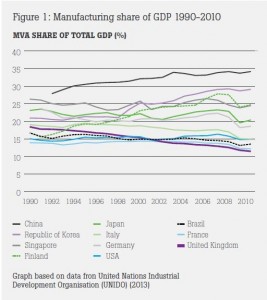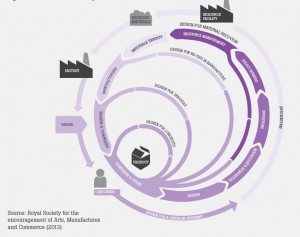Posted by Mike Coombes, 19th December 2013
This month sees the end of a consultation about the possibility of replacing Britain’s Population Census with an unproven alternative based on linking administrative data and sample surveys. It is well known that such a change would severely harm our ability to study neighbourhoods, but it is not so widely recognised that it would mean there will no data on the patterns of commuting and migration flows. This will not only prevent academic studies of places as ‘spaces of flows’ but prevent any definitions of the meaningful areas that have proved vital for:
• accurate targeting of local policy, plus the evaluation of labour market programmes
• research into uneven growth, and the delivery of appropriate housing and economic development
• providing a statistically consistent geography for the whole country and
• informing inward investment.
Research into the patterns of commuting and migration – ‘flows’ – depends entirely on data from a Census, because only a Census in the traditional form is able to provide robust flow data covering all small areas. One consequence of any decision to curtail the Census would be that it would mean the end of over 30 years of policy use of Travel-to-Work Areas (TTWAs). TTWAs have since the 1970s been defined for the government by analysing the fine-grain commuting data from each new Census. So why is this important?
Many policy decisions rely on comparing statistics on areas, so using appropriately-defined areas makes for better policy decisions: an area can miss out on large sums of public funds if the boundary around that area is not drawn appropriately. In the absence of TTWAs local data analyses rely on administrative areas, but their idiosyncratic boundaries distort the comparison of areas. TTWA boundaries are widely used by the UK government and others because they accurately map economic geography, and so allow comparisons of areas to be valid. Many recent urban or regional policies called for delivery by ‘functional economic area’ and the accepted definitions of such local economies is the TTWA.
The following points illustrate just some policy-related current uses of TTWAs.
• Several series of Official Statistics are reported by TTWAs, some on a monthly basis, and these are widely used for labour market policy or analysis (as shown by ONS’s Nomis database supporting many thousand TTWA-based downloads each year).
• Government policy use of TTWAs includes guidance in the Treasury Green Book on how to assess the case for government intervention: TTWAs are cited in explaining how analyses should use areas that approximate local labour markets, and worked examples are given for one application, the assessment of proposed transport investments in Scotland (Transport Scotland 2008).
• The major policies that have for a decade focussed on cities was evidenced by the State of the English Cities research which relied on TTWAs (Parkinson et al 2006); recent key developments include the announcement of City Deals that based its choice of cities on TTWAs, even though the policy is explicitly aimed at local authorities (HM Government 2011).
• Local Enterprise Partnerships were created to represent functional economic areas and the relevant policy documents repeatedly reference TTWAs as template for such areas (HM Government 2010).
A parallel development has been the need for housing market area (HMA) definitions so that housing policy is implemented across appropriate sub-regions (which potentially cut across administrative boundaries). Research for the National Housing and Planning Advice Unit has identified consistently-defined HMAs following analyses using small area data on migration as well as commuting. Even though the coalition government has shifted the scale of housing policy, it recognises that “[t]hese areas will help local planning” (Department of Communities and Local Government 2010).
There are no effective alternatives to the Census providing data on local flows of commuting or migration. Experiments by ONS to see whether APS could provide the data on commuting needed to update TTWAs found that reliable results were unobtainable. Alternative sources based on surveys are limited by their sample size that precludes data on small geographical areas – and especially impacts on flow matrices – as was confirmed explicitly by Skinner et al (2013: section 5.2.4) in their report for ONS.
Thus the availability of the Population Census small area data on commuting and migration flows remains an absolute pre-requisite so meaningful areas can be defined, making it possible to target local policy accurately, and deliver appropriate economic development, and study uneven growth.
Department of Communities and Local Government (2010) Geography of Housing Market Areas: Final Report and Summary www.gov.uk/government/publications/housing-market-areas
HM Government (2011) Unlocking Growth in Cities Cabinet Office, London www.gov.uk/government/uploads/system/uploads/attachment_data/file/7523/CO_Unlocking_20GrowthCities_acc.pdf
HM Government (2010) Local Enterprise Partnerships Letter from Secretaries of State BIS & CLG to local authority and business leaders www.gov.uk/government/uploads/system/uploads/attachment_data/file/5649/1626854.pdf
Parkinson M, Champion T, Evans R, Simmie J, Turok I, Cookston M, Katz B, Park A, Berube A, Coombes M, Dorling D, Glass N, Hutchins M, Kearns A, Martin R and Wood P (2006) State of the English Cities ODPM, London webarchive.nationalarchives.gov.uk/+/http://www.communities.gov.uk/publications/citiesandregions/state4
Skinner C, Hollis J and Murphy M (2013) Beyond 2011: independent review of methodology” Report to ONS www.ons.gov.uk/ons/about-ons/who-ons-are/programmes-and-projects/beyond-2011/reports-and-publications/methods-and-policies-reports/beyond-2011–independent-review-of-methodology.pdf
Transport Scotland (2008) Developing a Case by Case Approach The Scottish Government, Edinburgh www.transportscotland.gov.uk/stag/td/Part2/Economy/9.4.4.1


